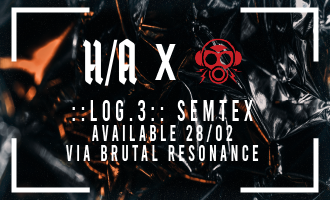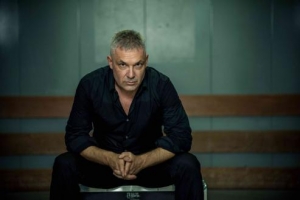
Marc Heal has already cemented his name in the history of industrial thanks for his founding of Cubanate, but for the past fifteen years the legendary producer has remained more than quiet. Minus the Compound Eye EP he curated with Raymond Watts AKA PIG, Heal hasn't touched the studio. However, with his move to Singapore the industrial master got back in touch with music and his inner desire to make music was freshened up once more. And thus The Hum was born, as was this interview. Read on below to discover everything you need to know about The Hum through the words of Marc Heal.
While it would be quite odd for anyone in the industrial scene to not know who you are, there are always newcomers and youngsters about who may not know your name. So, give us a quick little introduction. Who are you, what do you do, and what's your favorite hobby?
Marc: Well, I was bought up in Libya and the Persian Gulf. I started out making electronic music when I was a teenager in the UK in the 80s. I toured with Gary Numan with my first band, Westwon. Then I got into harder sounds and I started a band called Cubanate. We toured with The Sisters, FLA, lots of people. I had a side project called C-Tec with Jean Luc Demeyer from Front 242, we made two albums. I made games music for Sony Playstation for Gran Turismo and EA for Wing Commander.
Then in about 2000 I quit music and dried out. I started running studios and did some production. I had kids and moved to the wilds of northern England. I worked in film and TV, mostly on the business side, but sometimes writing. I wrote a book called The Sussex Devils, about evangelical religion and the satanic moral panic of the 1980s. I moved to Singapore in 2012 and I’m still here now.
I don’t have a “hobby”, unless it’s music. I try my hand at making things. I wouldn’t call music my hobby. More a compulsion.
You've had your own band Westwon, are of Cubanate fame, had tracks featured in arguably the best video game racing franchise in all the world, and have toured with scene legends such as Front 242 and FLA, and it's now that you're releasing your solo debut album. What made you finally want to put out your own material? Did anything inspire or encourage you? Did you get that itch to make music again?
Several times over the past fifteen years I thought, “I would like to record an album. Better try to write some songs.” This time it was, “I’ve written some songs. Better try to record an album.” I did it solo because I don’t know any other electronic musicians in Singapore. Eventually I found my guitarist Benny Ong. The only man with tattoos on the island. For this album I preferred working alone. I’ve learned about myself sober that I’m really quite shy. But Benny doesn’t say much anyway.
With all the previous experience mentioned above as well as much, much more, how has all that helped prepare you for your debut album? Would you say your time in Cubanate helped shape The Hum more so than other experiences?
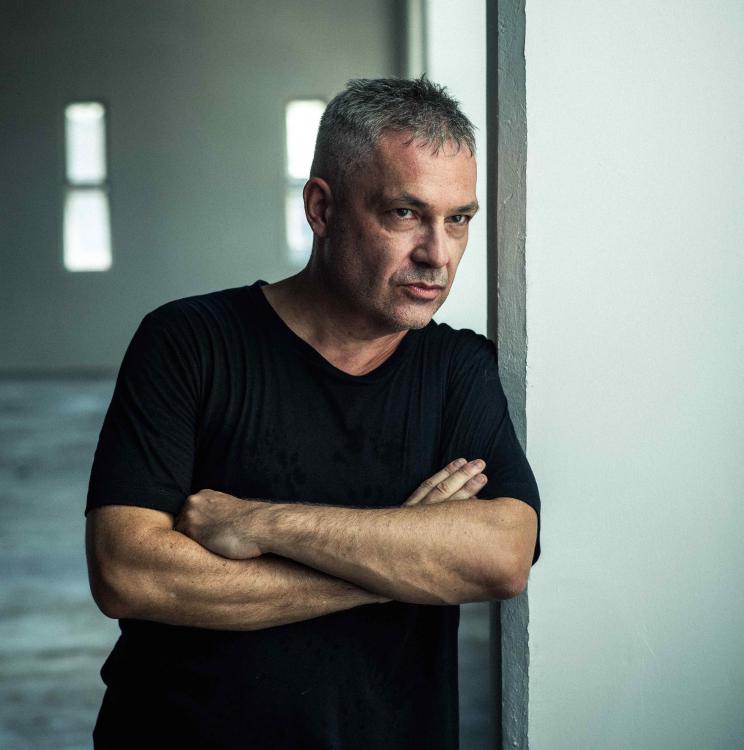
Your time in the mega-cities in the east inspired The Hum, and the title of the album comes from a mysterious noise that no one can quite explain. Could you dive a bit deeper into that and tell us how these themes fit into the album?
I travel a lot to Beijing, Shanghai, Jakarta, Kuala Lumpur. Huge cities. Their massive growth explains the decline of the west in a way that you have to see to appreciate. And of course, there is oppression and poverty on a vast scale. I found that layer of bland wealth overlaying the superstition and nascent violence offered me fertile inspiration. Show Homes, Model Citizen, Oilman were all taken from that experience. Adult Fiction too. The wives of expat bankers, writing novels. The Hum… well, it just spoke to me. A strange grinding sound that I only I could hear. Yeah, I thought. That’s how it feels.
I'm completely lost when it comes to what gear musicians use when recording albums, however there are quite a few people always interested in the tech side of productions. What gear did you use to record The Hum? Did you learn anything new whilst recording this album?
I like using instruments that you find, that’s why there’s a lot of old Moogs and tape echoes on the album. They crackle and hum and some of them blew up halfway through. I recorded digitally but I tried not to get bamboozled by all the choices that computer production offers you. I found a few sounds that I liked and used them. Anyway, Lion is a very atmospheric place. Nice ghosts but they’re very lively.
I wrote Faithful Machinery in the Lion control room. I looked around at all these magnificent old tape machines and the mixing desk that were built to such a high quality nearly fifty years ago. And I realised that they were dying. No one wants that stuff any more. I would be the last person to use them. I was saying goodbye and thanks.
I worked alone mostly. It definitely contributed to the feel of the album. When I had even a rough mix and I thought I might be losing my mind, I passed it over to Jules Seifert who mastered the album in the UK for a fresh opinion. I liked working that way.
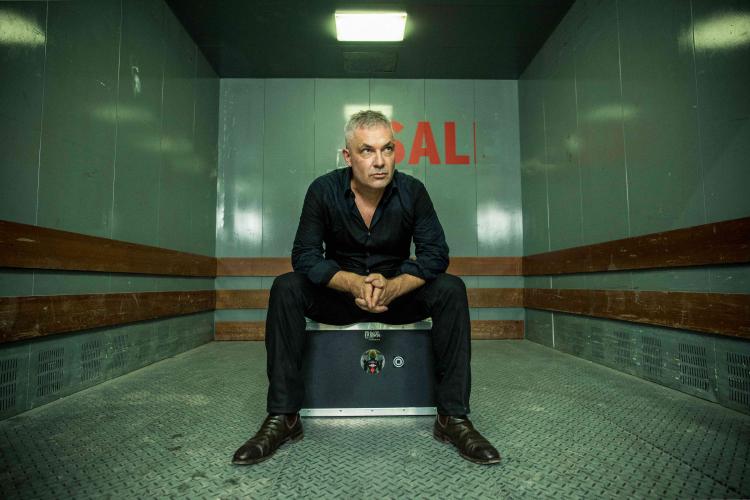
I understand that for this album you channeled a darker side of music when creating it. How did this differ to your previous works under Cubanate and all other projects? Did you feel odd creating this music, or did it just feel right?
After I wrote my book, The Sussex Devils, I became more interested in observing other people. I looked around me and found a much richer vein. In your twenties you think your problems are so important, but really they tend to be trivial and fixable. The darker strands in life – power, corruption, money, divorce, suicide: they tend to happen later. I draw my inspirations there. I think The Hum is powerful because it’s honest. I wanted to use industrial sound, not let it use me. I’m not pretending to be anything or anyone else.
And what were you trying to accomplish with the lyrics? Are you telling a story with them or do they each have their own calling?
How has the reception for The Hum been? I've only ever seen positive notes so far. Have you seen anything you've disagreed with?
And what's next for you? Do you have any EPs, songs, or collaborations in the making? Do you plan on playing live anywhere?
Lastly, I'd like to thank you for your time and wish you the best of luck. Cheers!
Marc Heal's The Hum is available for purchase HERE via Armalyte Industries.
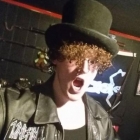
Steven Gullotta
info@brutalresonance.comI've been writing for Brutal Resonance since November of 2012 and now serve as the editor-in-chief. I love the dark electronic underground and usually have too much to listen to at once but I love it. I am also an editor at Aggressive Deprivation, a digital/physical magazine since March of 2016. I support the scene as much as I can from my humble laptop.
Share this interview
Facebook
Twitter
Google+
Shares
Popular interviews
Psyclon Nine
Interview, Mar 24 2017
Night Runner
Interview, Oct 13 2016
Testube
Interview, Apr 02 2022
Kite
Interview, Feb 10 2017
God Destruction
Interview, May 17 2016
Related articles
Broken Guru - 'Bent Up Halo'
Review, Apr 10 2015
Retrogramme - 'Feed'
Review, Mar 28 2015
Bite the Boxer - 'Rituals'
Review, Jun 17 2023
Skinny Puppy - 'The Greater Wrong of the Right'
Review, Jan 01 2004
Escamentia - 'Nautic'
Review, Jul 11 2022



